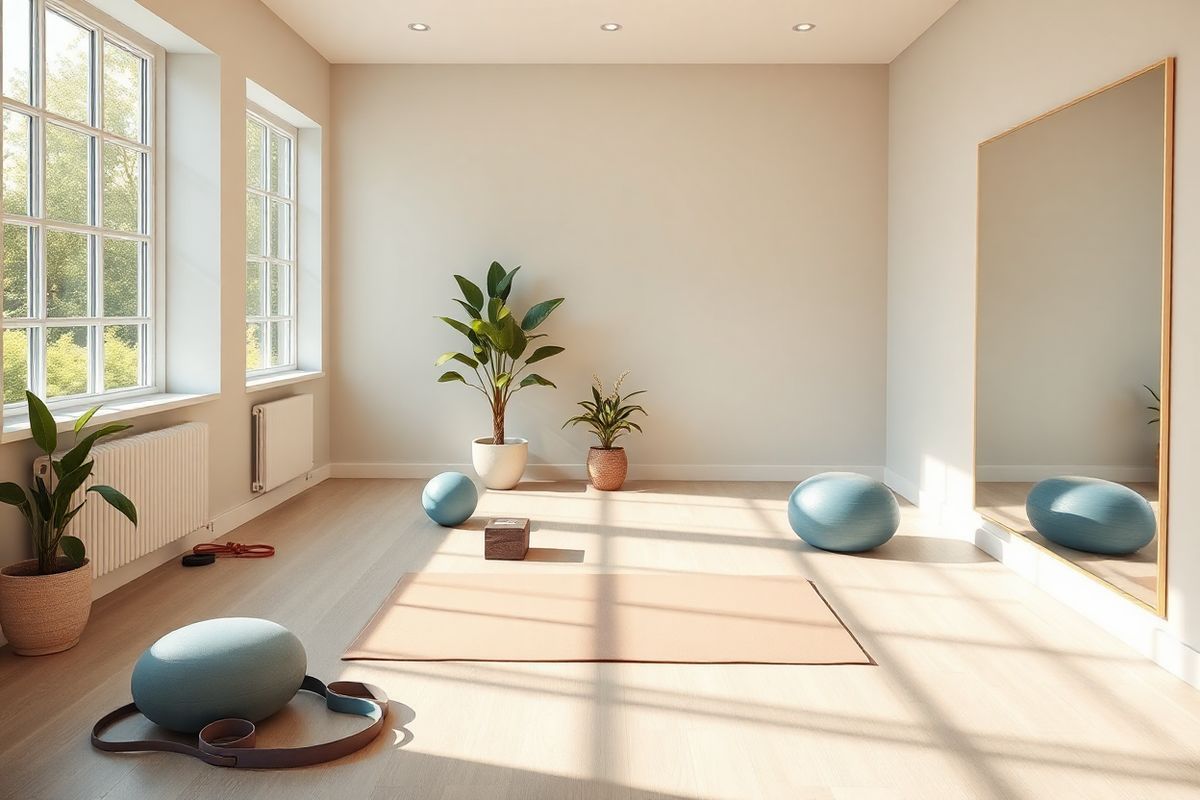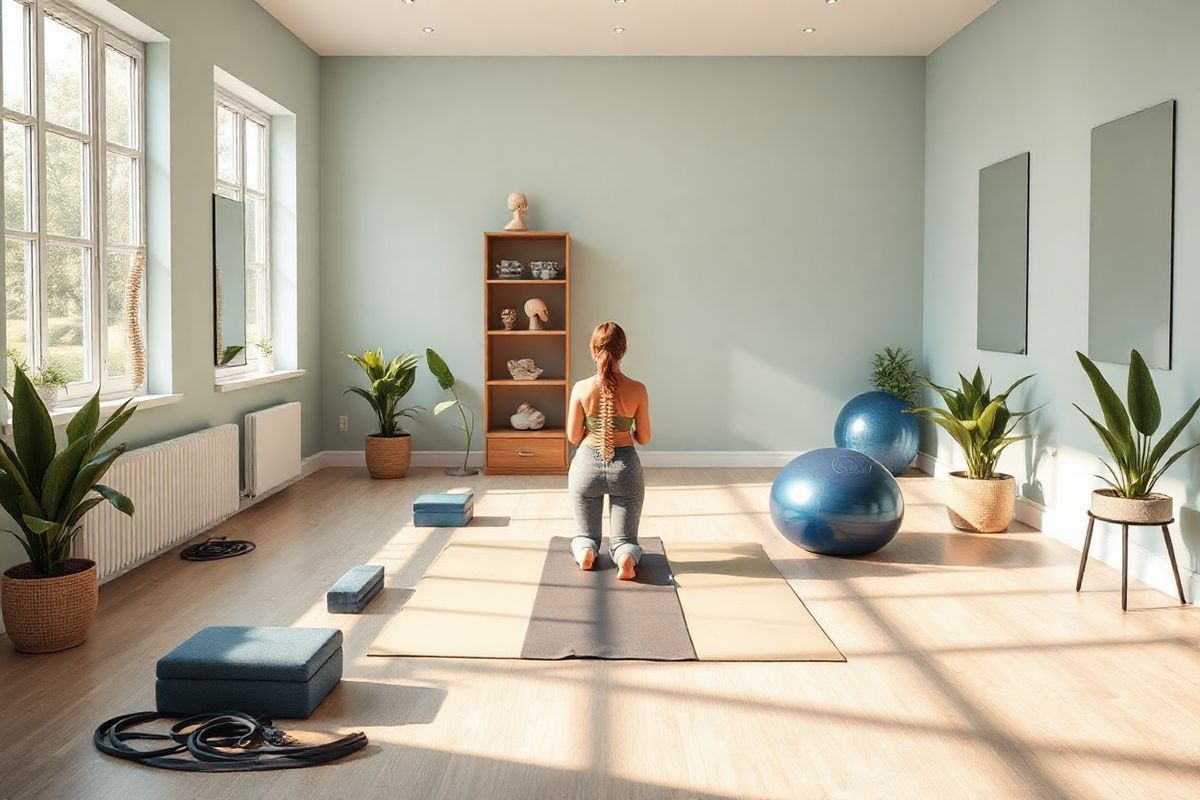Table of Contents
Understanding the Schroth Method: A Unique scoliosis Therapy

scoliosis, characterized by an abnormal side-to-side curvature of the spine, affects millions of individuals worldwide. The Schroth Method, an innovative approach to scoliosis management, offers a non-surgical alternative that emphasizes individualized exercise and physiotherapy. Developed in the early 20th century by Katharina Schroth, this method focuses not only on the physical aspects of scoliosis but also incorporates breathing techniques tailored to correct spinal deformities.
The Schroth Method is distinct from traditional physical therapy, which often addresses only the visible aspects of spinal curvature. Instead, it takes a comprehensive, three-dimensional approach, targeting the unique curvature of each patient’s spine through a series of personalized exercises. These exercises aim to enhance postural awareness, improve core strength, and promote proper breathing patterns, which can be particularly beneficial for individuals with scoliosis (The Schroth Method of Physical Therapy (for Parents), 2024).
The Science Behind Scoliosis: How the Schroth Method Addresses Spinal Curvature
Understanding the underlying mechanics of scoliosis is crucial in analyzing the effectiveness of the Schroth Method. Scoliosis is not merely a lateral deviation of the spine; it also involves rotation of the vertebrae and asymmetry of the surrounding musculature. This complex interplay can lead to significant physical discomfort, respiratory issues, and reduced quality of life (Schroth Method for Scoliosis, 2024).
The Schroth Method addresses these multifaceted challenges by employing exercises designed to de-rotate, elongate, and stabilize the spine in a three-dimensional plane. Key components of the method include:
-
Muscular Symmetry: The method seeks to restore balance in muscle strength around the spine, targeting both weakened and overactive muscle groups. This balance is crucial for maintaining spinal stability and reducing discomfort associated with muscle imbalances.
-
Rotational Angular Breathing: This innovative breathing technique encourages patients to breathe into the concave side of their curvature. By doing so, patients can enhance rib mobility, which helps reshape the rib cage and improves respiratory function.
-
Postural Awareness: Patients are taught to recognize their spinal alignment and posture using mirrors during exercises. This self-awareness is essential for making conscious adjustments during daily activities, ultimately aiding in the prevention of curve progression (Schroth Method: Exercise-Based Treatment for Scoliosis, 2024).
Personalized Treatment Plans: Tailoring the Schroth Method to Individual Needs

One of the hallmark features of the Schroth Method is its personalized treatment approach. Each patient undergoes a thorough assessment conducted by a Schroth-trained therapist, who evaluates the degree of spinal curvature, muscle strength, and overall physical condition. Based on this assessment, a tailored exercise program is developed to meet the specific needs of the patient.
The treatment plan typically includes:
-
Individualized Exercise Routines: Exercises are designed around the individual’s unique spinal curvature and physical capabilities. This customization ensures that each patient is working on the most effective strategies for their specific condition.
-
Regular Progress Monitoring: Continuous evaluation of the patient’s progress is essential. Regular follow-ups help therapists adjust the exercise regimen as needed, ensuring optimal outcomes over time.
-
Integration of Home Exercises: To enhance the effectiveness of therapy, patients are encouraged to perform certain exercises at home. This commitment to daily practice can significantly improve the efficacy of the Schroth Method (scoliosis Support & Research: surgery for degenerative scoliosis, 2024).
TablKey Components of the Schroth Method
| Component | Description |
|---|---|
| Muscular Symmetry | Focuses on balancing muscle strength around the spine. |
| Rotational Angular Breathing | Encourages breathing into the concave side to enhance rib mobility and reshape the rib cage. |
| Postural Awareness | Utilizes mirrors to develop self-awareness in spinal alignment and posture adjustments. |
Combining Techniques: Integrating the Schroth Method with Other Scoliosis Therapies
While the Schroth Method is effective on its own, it often yields even better results when combined with other treatment modalities. For instance, integrating bracing can be particularly beneficial for younger patients whose spines are still growing. Bracing works in tandem with the Schroth exercises to provide additional support and correction (Application of the grading system for “nociplastic pain” in chronic primary and chronic secondary pain conditions: a field study, 2024).
Furthermore, some clinics incorporate the Rigo-Schroth method, a variation of the original Schroth Method that emphasizes the role of the therapist more significantly. This combination of techniques allows for a more comprehensive treatment strategy that addresses both the physical and psychological aspects of scoliosis (Schroth Method: Exercise-Based Treatment for Scoliosis, 2024).
Empowering Patients: The Role of Home Exercises in Schroth Method Success
The success of the Schroth Method heavily relies on patient involvement in their treatment. Home exercises play a crucial role in reinforcing the principles learned during therapy sessions. Patients are typically provided with a set of exercises to perform daily, which may include:
-
Core Strengthening Exercises: These focus on engaging the abdominal and back muscles, which are essential for maintaining spinal stability.
-
Stretching Routines: Targeting tight muscle groups can help alleviate discomfort and improve overall flexibility.
-
Breathing Techniques: Practicing rotational angular breathing at home can enhance the benefits of therapy sessions (Nonsurgical Treatment Options for scoliosis, 2024).
TablSample Home Exercises for Scoliosis
| Exercise | Description |
|---|---|
| Pelvic Tilt | Lying on the back, tightening the stomach to flatten the back against the floor. |
| Arm and Leg Raises | Lying face down, raising arms and legs simultaneously to strengthen the lower back. |
| Cat-Cow Stretch | Alternating between arching and curving the spine while on hands and knees to improve flexibility. |
FAQ Section
1. What is the Schroth Method?
The Schroth Method is a specialized physical therapy approach designed to treat scoliosis through personalized exercises that focus on muscle symmetry, breathing techniques, and postural awareness.
2. Can the Schroth Method correct scoliosis?
While the Schroth Method cannot completely straighten the spine, it can significantly improve posture, reduce pain, and potentially slow the progression of spinal curvature.
3. Who can benefit from the Schroth Method?
The Schroth Method can benefit individuals of all ages with scoliosis, including children, adolescents, and adults, regardless of the severity of their condition.
4. How often should exercises be performed?
Patients are encouraged to perform their specific exercises daily to achieve the best results.
5. Is the Schroth Method suitable for all types of scoliosis?
The Schroth Method is especially effective for idiopathic scoliosis but can also be adapted for other types of scoliosis depending on individual needs.
References
- The Schroth Method of Physical Therapy (for Parents). Retrieved from https://kidshealth.org/en/parents/schroth-pt.html
- Schroth Method for scoliosis. Retrieved from https://www.hopkinsmedicine.org/health/conditions-and-diseases/scoliosis/schroth-method-for-scoliosis
- Scoliosis Support & Research: surgery for degenerative scoliosis. Retrieved from https://www.scoliosissos.com/blog/schroth-method-scoliosis
- Application of the grading system for “nociplastic pain” in chronic primary and chronic secondary pain conditions: a field study. Retrieved from https://pubmed.ncbi.nlm.nih.gov/11647825/
- Nonsurgical Treatment Options for Scoliosis. Retrieved from https://orthoinfo.aaos.org/en/treatment/nonsurgical-treatment-options-for-scoliosis/











